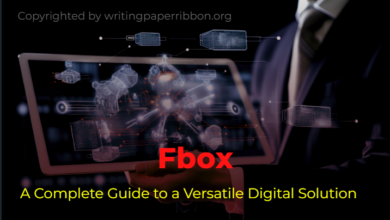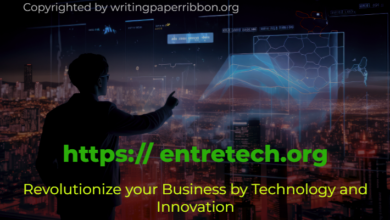SSIS 816: Discover Future Trends and Exciting Innovations
Exploring SSIS 816: Unraveling the Mystery
SSIS 816, a seemingly cryptic combination of letters and numbers, holds significance in the realm of technology, particularly within the context of data integration and management. As we delve deeper into the intricacies of SSIS 816, we uncover a world of possibilities and functionalities that contribute to the efficiency and effectiveness of data-driven processes. In this comprehensive guide, we aim to demystify SSIS 816, exploring its origins, applications, and implications in today’s digital landscape.
Table of Contents
Introduction
SSIS, or SQL Server Integration Services, is a Microsoft toolset used for building data integration and workflow applications. Within this framework, SSIS 816 refers to a specific component or functionality within the SSIS ecosystem. To comprehend the significance of SSIS 816, it’s essential to grasp the foundational concepts of SSIS and its role in data management.
What is SSIS?
SQL Server Integration Services (SSIS) is a platform for building high-performance data integration and workflow solutions. It enables users to design and deploy integration packages that extract, transform, and load data from various sources into destination systems. SSIS facilitates the creation of data-driven workflows, allowing organizations to automate repetitive tasks, cleanse and transform data, and streamline business processes.

The Evolution of SSIS 816
SSIS 816 represents a milestone in the evolution of SQL Server Integration Services. It signifies a significant update, enhancement, or addition to the SSIS toolkit, introducing new features, functionalities, or improvements to existing capabilities. The journey of SSIS 816 from conception to implementation reflects the ongoing innovation and refinement within the realm of data integration and management.
Applications of SSIS 816
The versatility of SSIS 816 extends across a myriad of applications and use cases, catering to the diverse needs of organizations across industries. Let’s explore some common scenarios where SSIS 816 proves invaluable:
Data Migration and ETL Processes
SSIS 816 plays a pivotal role in data migration projects, facilitating the seamless transfer of data between disparate systems. Whether it’s migrating data from legacy databases to modern platforms or consolidating data from multiple sources, SSIS 816 provides the tools and capabilities to orchestrate complex ETL (Extract, Transform, Load) processes with ease.
Real-time Data Integration
In today’s fast-paced digital landscape, real-time data integration is paramount for making informed decisions and gaining competitive advantage. SSIS 816 empowers organizations to integrate data in real-time, enabling timely insights and actionable intelligence. Whether it’s streaming data from IoT devices, web services, or social media platforms, SSIS 816 offers the flexibility and scalability to handle diverse data streams efficiently.
Business Intelligence and Analytics
Data is the lifeblood of modern businesses, driving strategic decision-making and fueling business intelligence initiatives. SSIS 816 serves as a foundational component of business intelligence and analytics solutions, enabling organizations to extract, transform, and load data into data warehouses or analytical systems. By leveraging SSIS 816, businesses can unleash the full potential of their data assets, uncovering valuable insights and trends that drive growth and innovation.
Best Practices for SSIS 816 Implementation
To harness the full potential of SSIS 816 and maximize its impact on data integration and management initiatives, it’s essential to adhere to best practices and guidelines. Here are some tips for successful S͙S͙I͙S͙ 8͙1͙6͙ implementation:

Comprehensive Requirements Analysis
Before embarking on a S͙S͙I͙S͙ 8͙1͙6͙ project, conduct a thorough analysis of business requirements, data sources, and integration objectives. Define clear goals and success criteria, ensuring alignment between technical solutions and business objectives.
Modular Design and Reusability
Adopt a modular design approach when developing S͙S͙I͙S͙ 8͙1͙6͙ packages, breaking down complex workflows into smaller, reusable components. This promotes scalability, maintainability, and flexibility, allowing for easier troubleshooting and future enhancements.
Performance Optimization
Optimize the performance of S͙S͙I͙S͙ 8͙1͙6͙ packages by implementing best practices for data processing, such as parallelism, data partitioning, and efficient data flow design. Monitor and fine-tune package performance using built-in SSIS tools and performance counters to identify bottlenecks and optimize resource utilization.
Error Handling and Logging
Implement robust error handling and logging mechanisms within S͙S͙I͙S͙ 8͙1͙6͙ packages to capture and handle exceptions gracefully. Use built-in features like event handlers, checkpoints, and logging providers to track package execution, troubleshoot errors, and ensure data integrity.
The Future, Trends and Innovations
As technology continues to evolve and new trends emerge, the future of S͙S͙I͙S͙ 8͙1͙6͙ holds promise for further advancements and innovations in data integration and management. Some emerging trends and developments to watch in the realm of S͙S͙I͙S͙ 8͙1͙6͙ include:

Cloud Integration and Hybrid Architectures
With the growing adoption of cloud computing and hybrid IT environments, S͙S͙I͙S͙ 8͙1͙6͙ is expected to evolve to support seamless integration between on-premises and cloud-based data sources. Expect to see enhancements in areas such as connectivity, security, and scalability to accommodate diverse deployment models.
AI and Machine Learning Integration
The integration of AI and machine learning capabilities into S͙S͙I͙S͙ 8͙1͙6͙ is poised to revolutionize data integration and analytics processes. Look for advancements in areas such as predictive analytics, automated data cleansing, and anomaly detection, leveraging AI-driven insights to drive business outcomes.
Data Governance and Compliance
As data privacy regulations become increasingly stringent, S͙S͙I͙S͙ 8͙1͙6͙ will play a vital role in ensuring data governance and compliance. Anticipate enhancements in areas such as data lineage, metadata management, and encryption to address regulatory requirements and safeguard sensitive information.
Conclusion
In conclusion, S͙S͙I͙S͙ 8͙1͙6͙ represents a cornerstone in the landscape of data integration and management, empowering organizations to harness the power of data for strategic advantage. By understanding the origins, applications, and best practices associated with S͙S͙I͙S͙ 8͙1͙6͙, businesses can unlock new opportunities for innovation, efficiency, and growth in today’s data-driven world.
FAQs
What is SSIS 816?
- S͙S͙I͙S͙ 8͙1͙6͙ is a component within SQL Server Integration Services (SSIS), a Microsoft toolset for data integration and workflow applications. It represents a specific functionality or feature within the SSIS ecosystem.
What are the key features of SSIS 816?
- The key features of S͙S͙I͙S͙ 8͙1͙6͙ may vary depending on the specific update or enhancement it represents. However, common features include advanced data transformation capabilities, enhanced connectivity options, and improved performance optimizations.
How does SSIS 816 contribute to data integration projects?
- S͙S͙I͙S͙ 8͙1͙6͙ plays a crucial role in data integration projects by facilitating the extraction, transformation, and loading (ETL) of data from disparate sources into destination systems. It enables organizations to automate data workflows, streamline processes, and ensure data consistency and accuracy.
Is SSIS 816 suitable for real-time data integration?
- Yes, S͙S͙I͙S͙ 8͙1͙6͙ can be used for real-time data integration scenarios, allowing organizations to integrate data streams from various sources in near real-time. It offers capabilities for handling streaming data, event-driven architectures, and continuous data processing.
What are the benefits of implementing SSIS 816?
- Some benefits of implementing S͙S͙I͙S͙ 8͙1͙6͙ include improved data quality and consistency, reduced development time and costs, enhanced scalability and performance, and better support for complex integration scenarios.
How does SSIS 816 differ from previous versions of SSIS?
- S͙S͙I͙S͙ 8͙1͙6͙ may introduce new features, enhancements, or improvements over previous versions of SSIS. These differences could include updated user interfaces, additional functionality, performance optimizations, or compatibility with new data sources and destinations.
Can S͙S͙I͙S͙ 8͙1͙6͙ be integrated with other Microsoft technologies?
- Yes, S͙S͙I͙S͙ 8͙1͙6͙ can be seamlessly integrated with other Microsoft technologies such as SQL Server, Azure services, Power BI, and Visual Studio. This interoperability allows organizations to leverage existing investments in the Microsoft ecosystem and tools.
What are some best practices for deploying S͙S͙I͙S͙ 8͙1͙6͙ packages?
- Best practices for deploying S͙S͙I͙S͙ 8͙1͙6͙ packages include a modular design for reusability, performance optimization techniques, error handling, and logging strategies, and adherence to security and compliance standards.
Is training available for learning S͙S͙I͙S͙ 8͙1͙6͙?
- Yes, there are numerous training resources available for learning S͙S͙I͙S͙ 8͙1͙6͙, including online courses, documentation, tutorials, and community forums. Microsoft also offers official training and certification programs for SSIS and related technologies.
What is the future roadmap for S͙S͙I͙S͙ 8͙1͙6͙?
- The future roadmap for S͙S͙I͙S͙ 8͙1͙6͙ may include continued innovation and enhancements in areas such as cloud integration, artificial intelligence, data governance, and compliance. Microsoft regularly updates SSIS with new features and improvements based on customer feedback and industry trends.
These FAQs provide insights into the functionality, applications, and best practices associated with S͙S͙I͙S͙ 8͙1͙6͙, helping users gain a better understanding of this integral component of data integration and management.
More Articles: Home





One Comment